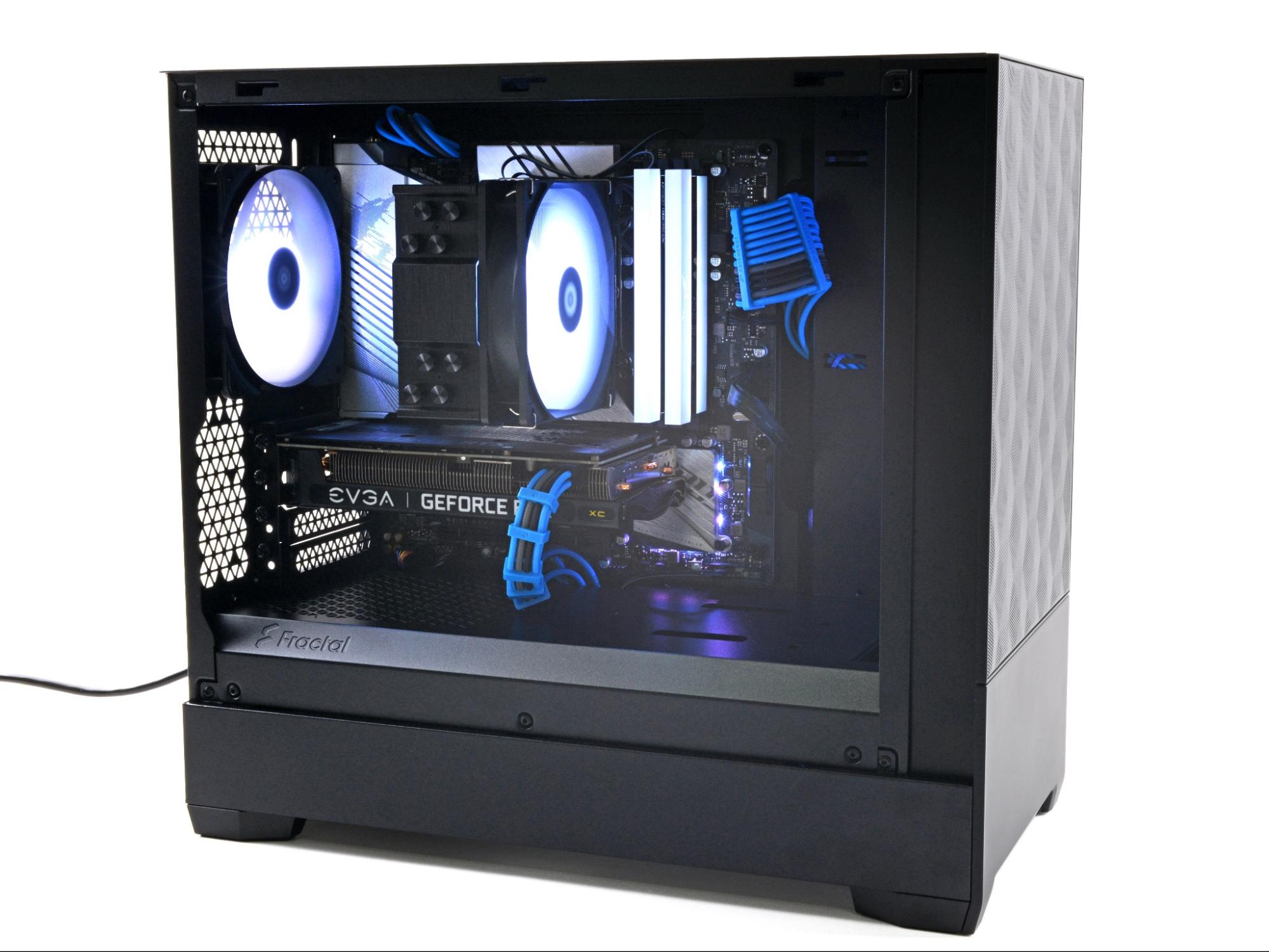
[ad_1]
With the appropriate cables connected to your PSU (Image 45), we’re ready to start routing them. First, slide your PSU into its approximate mounting location, careful not to pinch any of the cables that connect to the motherboard (Image 46). Some cases allow access through the back panel, and some cases require sliding the cables and PSU through the rear cutout. In most cases, the PSU should install fan-down: you should see ventilation through the bottom of the case for it to breathe through. In cases where the PSU mounts up top, the fan might breathe through cutouts in the top panel, or more commonly fan-down, directly into the case. If you’re unsure, consult your case manual—your power supply needs cool, fresh air. You don’t need to secure it down with screws quite yet—it can be easier to let it shift around slightly while you’re routing cables. If your case has hard drive bays inside the case “basement,” note that they might get in the way of your cables. Some cases offer front-to-back adjustment of these cages, so move them closer to the front if you need more room or remove them if they aren’t in use (Image 47).
Route the larger 24-pin motherboard power cable first (Image 48). Find the largest cutout in the case next to where the 24-pin plug is on the motherboard’s right edge, and feed the cable through (Image 51). Pull it far enough through so you can turn the cable around to face the motherboard, and align the pins with the plug. All PSU cables only go in one way—with a locking tab on one side—so make sure it’s oriented correctly before applying any pressure. Once aligned, press down firmly until you hear (or see) the locking tab click into place. The cable should sit flush with the socket. Pull any extra cable length back through the back panel, creating a nice, tight bend when looking from the motherboard side (Image 52). Don’t pull the excess back too tight, though—make sure the socket and motherboard aren’t stressed. On the back side, use cable channels, velcro, and zip-ties to secure your cable in place. Remember that you’ll have to fit a back panel on when you’re finished, so make sure nothing is sticking out too far.
If you’re using decorative cable extensions, the process is the same. Install any cable extensions to their matching cables (make sure not to mix up CPU and GPU power cables!) and route them to their normal locations (Images 43 and 50). Just know that since your cables are longer, you’ll have more excess to stash away out of sight.
Now onto CPU 8-pin power. This cable can be tricky, especially if your case is small or your cooler is big (or both). This cable will be the easiest to install with any top or rear fans removed, as its plug is usually located at the extreme top left corner of the motherboard (Image 49), possibly crowded by motherboard heatsinks. Feed the power cable through the cutout that’s closest to the connector. In a similar manner to the larger motherboard cable, reach in and pull it far enough through so you can turn it around towards the motherboard. Align the pins with the connector and push to latch until you hear the tab click into place. Plugging this cable in can be made easier if you’re using cable extensions: disconnect the extension from its PSU power cable and plug it in, from the front, into the CPU power plug. Once secured, feed the opposite end through the cutout and reconnect it to the PSU power cable. Pull extra cable length back through the back panel, creating a nice, tight bend when looking from the motherboard side (Image 53). Again, don’t pull too tight—make sure neither the socket or motherboard are bent or stressed. On the back side, use cable channels, velcro, and zip-ties to secure your cable in place. Stash excess cable length away underneath.
For both SATA and Molex power cables, a good tip is to feed the cable through the closest cutout or “the path of least resistance” for each device. Try to avoid cables laying on the bottom of the case, draping over other cables, or hanging in midair. The cleaner you route these now, the easier future upgrades and/or troubleshooting will be. If your case uses a built-in fan or RGB hub, chances are it’s powered by SATA or Molex power. In this case, the cables might not need to be fed into the front area of the case; they might all stay in the back or bottom, out of sight.
Even though the graphics card isn’t installed, route its power cables to about where they’ll be once the card is in. Most cases have a cutout on the bottom, below the graphics card, for graphics card power cables. Like how the motherboard and CPU power cables come out through the back side close to the plugs, GPU power cables usually come up through the floor for the cleanest look (Image 54). Check your GPU for the type (and the quantity) of cables required, and pull them up through the bottom, being sure to leave enough slack to plug them in later.
Spend some time cleaning up the back of your case (Image 55). Although this area won’t be visible, easy-to-follow cable paths can relieve future headaches when the time comes to upgrade—or troubleshoot a problem. Plus, you’ll need to actually get your back panel on without a massive bulge—now’s the time to avoid the future fuss!
With your cables installed, routed, and managed, use the four screws included with your PSU to secure it down (Image 56). Not all power supplies secure at the four corners exactly; follow the rear case cutout as a guide for where each of the four screws are supposed to go (Image 57). Keep the PSU power switch flipped off for now.
[ad_2]